Izzy Bartley, Digital Learning Officer at Leeds Museums and Galleries, UK, shares with ReReeti, her insights on museums and online learning.
Providing web-based resources for teachers to use with their students is a fantastic way for museums, galleries and heritage sites to broaden their engagement and extend their reach. With an online resource, even the smallest site has the potential to reach a worldwide audience. High quality, digital learning content reflects positively on the organisation that created it, helping to both increase its profile and boost its reputation.
This blog post gives a brief summary of what we have learnt from hosting online learning resources on the website mylearning.org and highlights some best practice. My Learning hosts learning resources from arts, cultural and heritage organisations and is free for teachers to use. It has been online for 12 years and has recently been totally redeveloped, with a brand new website launched in June 2018.
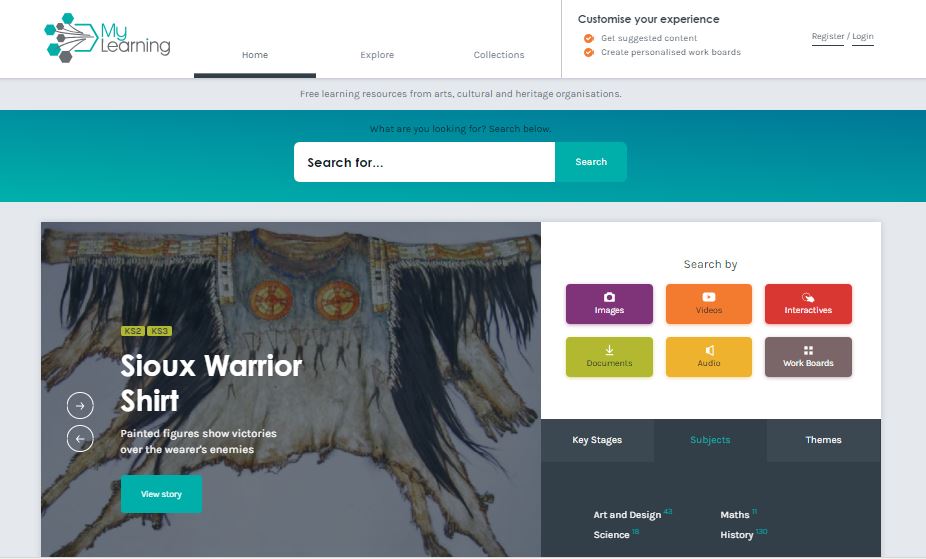
From the My Learning homepage, teachers can search by key stage, subject, media type or by entering a search term. Those resources that are currently the most popular are displayed, along with recommendations of themed collections.
Our premise
When creating online resources for teachers to use in their classrooms, we work from the premise that teachers are experts at what they do – they know how to teach and how to create lesson plans that work for them and their classes. For this reason, we do not provide structured lesson plans as resources on My Learning. What we do provide is accurate information, quality media resources (e.g. images, audio and video) and discussion and activity ideas which teachers are free to use in whatever way fits their needs best.
The golden rule
My golden rule for content is that everything we publish on My Learning must be of high quality. It is much, much better for an organisation to have one high-quality resource than several mid to low quality resources. There are many websites hosting learning materials, all vying for attention, and first impressions count. If a teacher lands on your website for the first time and sees poor quality content, they are unlikely to return. So it is better to start small, with a single high-quality resource, and build up from there.
The essential elements
So what makes a high-quality resource? There are two essential elements:
- Accurate text
- High-resolution images
The information provided needs to be clear enough for non-subject specialist teachers to be able to understand, with any technical or specific terms explained in a glossary at the end. The text must also take into account the age of the students the resource is aimed out, to ensure the correct amount of detail is included – too little and the resource might not be useful, too much and it could be overwhelming, leaving teachers needing to spend lots of time picking out the parts that are appropriate for their students.
Museums and other heritage sites generally use objects to tell stories, so high-quality images of those objects are equally essential. Photographs need to be in-focus and of a high enough resolution to allow printing at A4 size as a minimum. This will also ensure that they will project on a screen clearly. On MyLearning.org we work with contributing organisations to try and release all our content under a Creative Commons Non-Commercial license. This allows the content to be used for educational purposes but legally protects against their use for commercial gain.
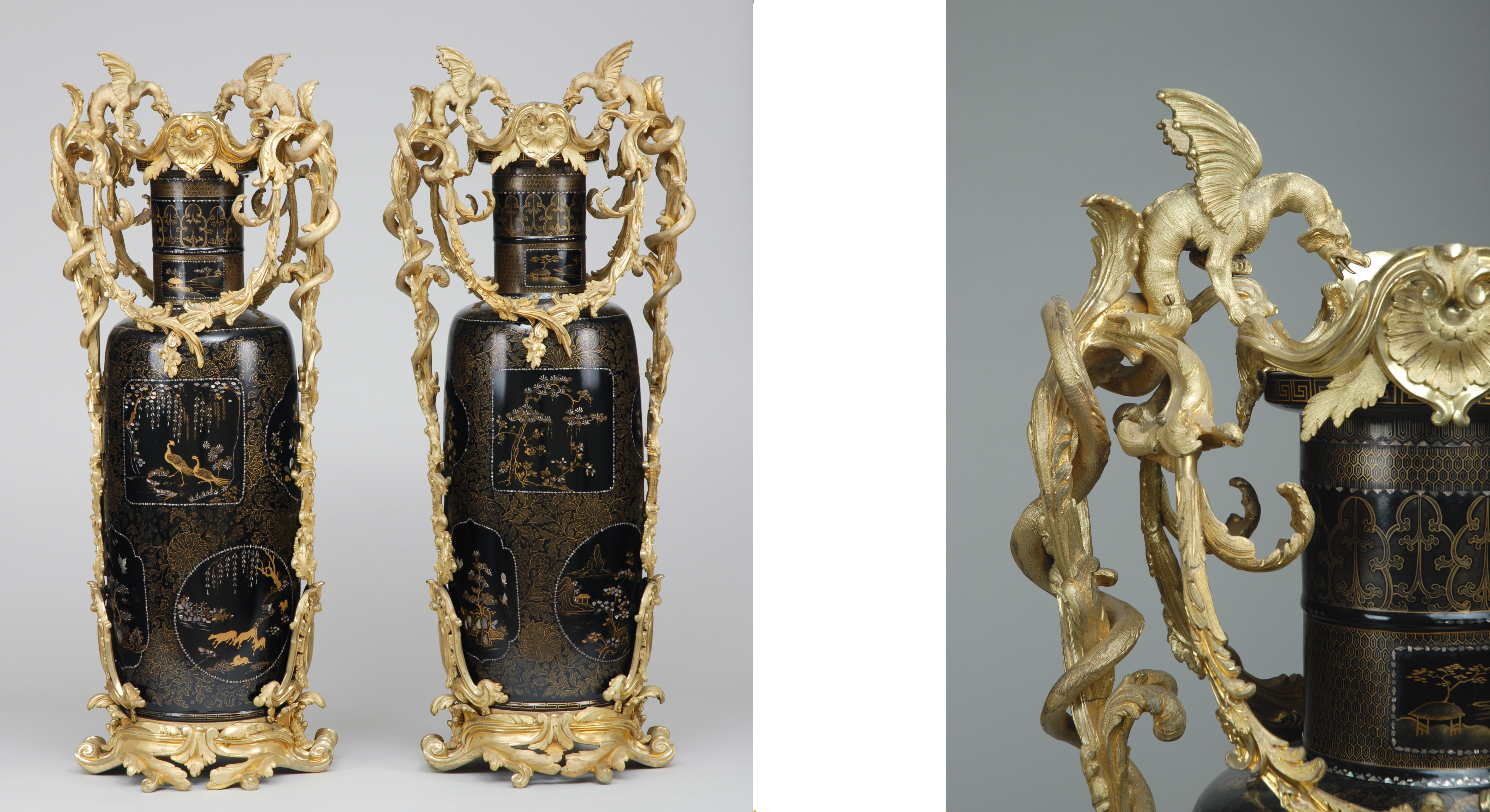
Good quality, high-resolution images such as this one can be used by teachers to support their students’ learning in many different ways. Photograph shows two papier mâché vases and a close up shot illustrating the level of detail and craftsmanship. Image: © Leeds Museums and Galleries | CC BY NC SA
Providing high quality, Creative Commons licensed images gives teachers the flexibility and freedom to use these assets in the ways that best suit their needs, making your resource more attractive and therefore more likely to be used.
Adding extra value
Once the basics are in place, there are many ways to add value to a learning resource. Creating downloadable resources such as presentations and activity sheets, or providing other kinds of media assets such as audio and video recordings can help make your learning resource more useful, and also appeal to students’ different learning styles. Adding discussion and activity ideas can also be a great way to encourage teachers to use your resources, and provide a springboard from which students can launch their own explorations.
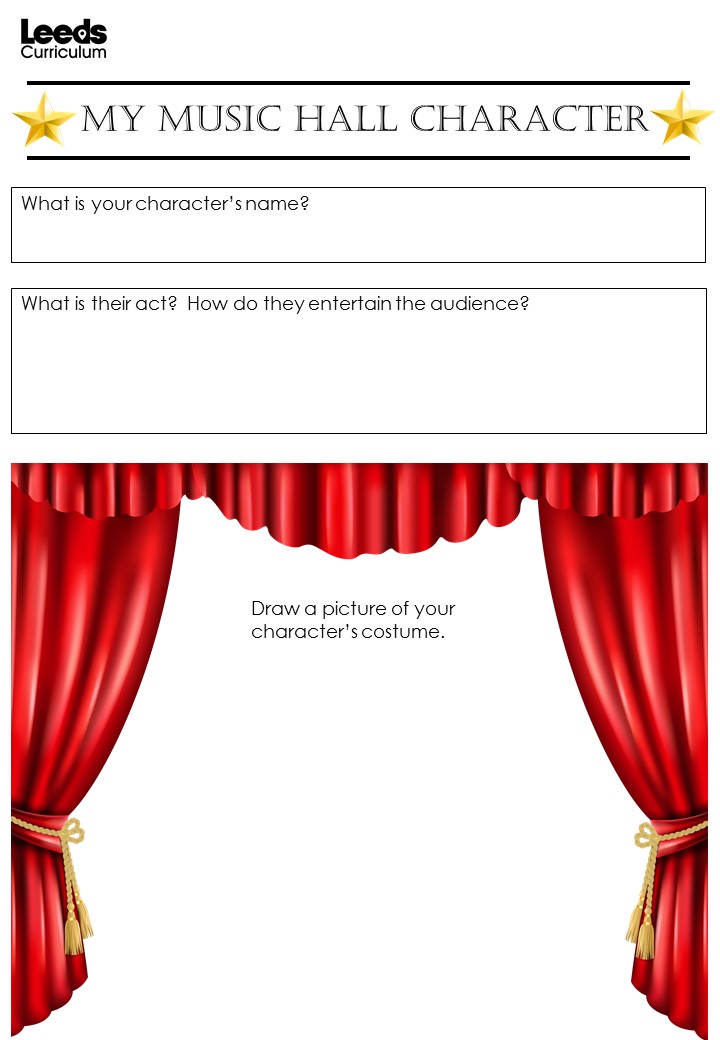
Activity sheets should be uploaded in Word or Powerpoint (which can be set to an A4 paper size for printing) rather than PDF format. This enables teachers to easily edit the document and adapt it to their needs. Clear instructions that are bullet-pointed or chunked and relevant illustrations make activity sheets more visually appealing and can help the student to engage more with the activity. Activity sheet from mylearning.org
Providing links to other sources of high-quality information or media assets are also good to include. It stands to reason that no single organisation can create all the best resources on every subject – so it makes sense to signpost to other useful materials that are available on the internet. This interlinking of information is what the internet was built for, and by providing teachers with avenues to find the further quality content they can use, the usefulness of your own resource is also increased.
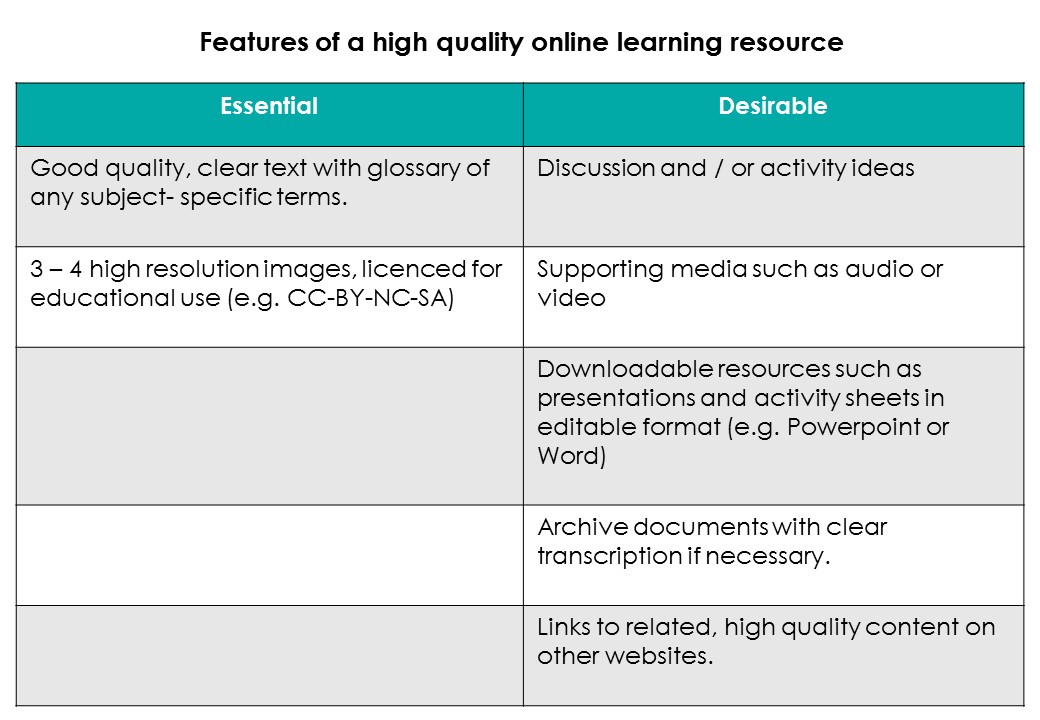
The table above summarises the essential and desirable components of a high quality online learning resource.
Organising online resources
On My Learning, we find it beneficial to link each resource to the National Curriculum (for England) by key stage and subject. This is especially useful for non-subject specific teachers and helps to identify how a resource can help them deliver a particular aspect of the curriculum. In addition, resources also are tagged by content related themes and keywords, making them easier to find in internet searches.
Whether you have a single or a suite of learning resource online, it is vitally important that it is quick and easy for teachers to find. Clear sign-posting, easy site navigation and effective search functions are all crucial. If teachers can’t find your learning resource, then they can’t use it!

Izzy Bartley is a qualified teacher, and spent 12 years working in a variety of primary and secondary schools both in England and abroad. She is currently the Digital Learning Officer at Leeds Museums and Galleries and manages the website MyLearning.org which hosts free learning resources from arts, cultural and heritage organisations.Twitter: @mylearning_org and @FireflyHeritage
ReReeti works with museums, galleries and heritage sites across India to plan strategies, design systems and implement programmes to increase audience engagement and institutional/ company visibility. Email us at info@rereeti.org for a free consultation or to collaborate on an upcoming exhibition.







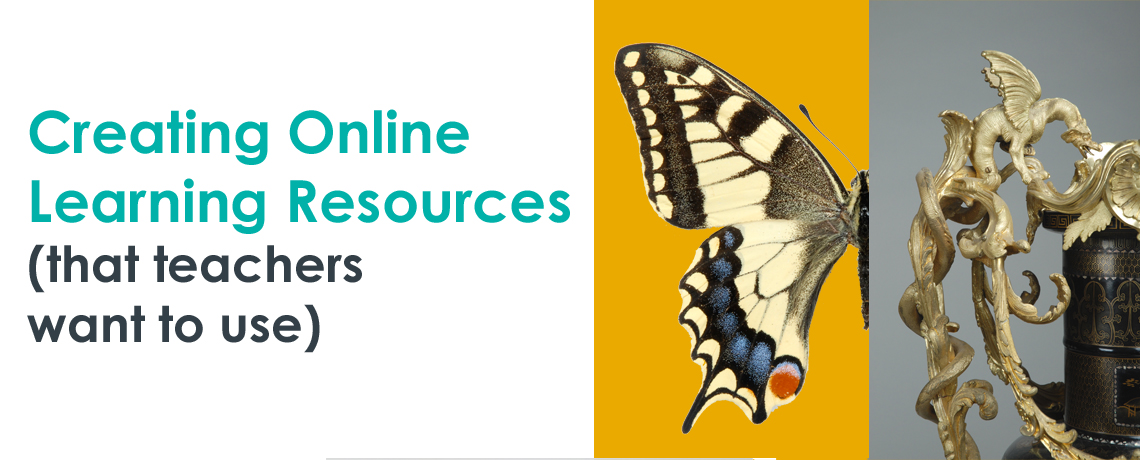
Recent Comments